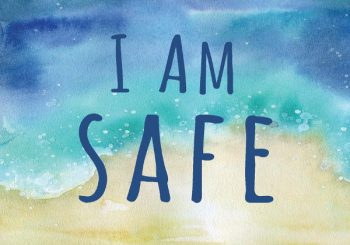Guest Writer for Wake Up World
Ever look around and feel like we are all either shut-down and depressed, or wired and on edge? Or both? We humans are having a particularly hard time, and despite the projection of our inner chaos all over this planet, we are primarily struggling to just be comfortable in our own skin. To simply be.
[pro_ad_display_adzone id=”110028″]
We don’t know how to be, however, and so we are forever arranging the furniture on the deck of the proverbial Titanic, neglecting the gaping hole down below. Because of this foundational instability, a single email or text message can send us into a tailspin, and we feel that our deepest desires and entitlements are constantly receding into the future, never to be secured, while we consume ourselves with busyness and distractions.
Maybe in your struggles, you were captured by the medical system, labeled, told you have a brain chemical imbalance, and medicated. And just now, you’re beginning to wonder where the you is in this form of treatment. Isn’t there a reason, related to your human experience, that you have experienced agitation, persistent worry, panic, insomnia, disconnection from your body or even reality? Could it really just be random misfiring of the brain?
Your trauma, my trauma, our trauma
In my private practice, nearly 100% of the women I have worked with identify as having experienced childhood trauma—physical and sexual abuse, and/or domestic violence. The perceived injuries range from a mother’s critical reaction to a math test score in first grade all the way to heinous and ongoing sexual violation. Trauma expert and author of the important book, The Body Keeps the Score, Dr. Bessel van der Kolk writes, “Trauma causes people to remain stuck in interpreting the present in light of an unchanging past.”
Thus repeated patterns of perceived victimization arise, perhaps to show us like a persistent tap on the door of our soul, that this pain requires healing. Our response to these patterns is often referred to as reactivity, as in re-act or acting again from a past imprint rather than to the context of the present life experience, and defines the places, people, and things that hold the power we need to reclaim in order to heal. In fact, anything that gets you hot under the collar is probably tripping a trauma wire, firing off programs of felt abandonment, betrayal, inadequacy, and shame…programs that have stories attached to them, that keep us feeling a surrogate sense of control because at least we are right about being wronged.
How do you know when you’re acting from your childself? You need to feel right about being wronged. Heal victim mentality, come into your adult power.
—Kelly Brogan, MD
What went wrong?
While I am a firm believer in triage—in starting with the low-hanging fruit of self-healing in the form of lifestyle change—I hold the perspective that personal meaning is at the root of everything that happens seemingly “to us” in our lives. It is from this perspective that my gluten, sugar, toxicant, and stress-induced Hashimoto’s thyroiditis, also served as an invitation to begin to awaken spiritually and to heal neglected emotional wounds and trauma, the compensation for which were driving my personality, my relationships, and my life experience in a way that left me feeling unfulfilled and out of control.
For most of us, the experience of conditional love from our primary caretakers left us with what is referred to by Dr. Alfie Kohn as “contingent self esteem”—as in, feeling fleeting self-worth only when we secure the approval of others. In his book, Unconditional Parenting (required reading for all humans, not just parents), he uses published research to build an irrefutable case for the damaging impact of love withdrawal (think time-outs at best, violence at worst) and of rewards and praise as setting up a sense of self that is guided by the approval of a parent rather than an inner sense of lovability and adequacy.
So we find ourselves, in our 30s and 40s, confronting the programs of productivity, success, and unboundaried relationships as increasingly bankrupt methods of controlling the lack of self-acceptance and love that is festering beneath. We carry our Victim Stories because, from our childhood patterning, we were potentially victimized and we continue to look for confirmation of that experienced reality in an effort to resolve this worldview and graduate to adult responsibility.
If we have been living without a sense of safety, and perhaps worse, and with the reverberation of trauma, for the greater part of our adult life, what does this do to our nervous system?
Fight, flight…or freeze
One day, while walking from his office toward the subway in Manhattan, my mentor, Dr. Nicholas Gonzalez turned to me and said, “You know what the top five most important contributors to health are?” I dug deep, listing off inflammation, the microbiome, the role of nutrients….until I realized that this was a question my previous training in functional medicine likely hadn’t prepared me to answer.
He said, “The autonomic nervous system, the autonomic nervous system, the autonomic nervous system, the autonomic nervous system, and the autonomic nervous system.”
He literally said it five times, counting out on his fingers.
He was referring to the nervous system that controls our glandular secretions, our heart rate, and everything “automatic” about our being that also assesses and orchestrates responses to the state of alarm in the body.
At the intersection of neuroscience, evolutionary biology, and psychology, research scientist, Dr. Stephen Porges contributed the polyvagal theory1 which adds important nuance to our understanding of the autonomic nervous system. Beyond rest/digest and fight/flight, he describes how the vagus nerve, often conceived of as simply a parasympathetic, rest and digest conduit between visceral organs and the brain, has evolved many different hierarchical roles.
Porges describes the vagus as having two branches—a more ancient unmyelinated branch below the diaphragm responsible for reptilian-like freeze (and defecate) responses called the dorsal vagal complex, and a relatively newer branch above the diaphragm that lowers heart rate, controls facial expressions, and vocal tone called the ventral vagal complex or the “social nervous system.”
In times of safety, this vagal system supports rest, digestion, and regeneration, however, in times of perceived danger, this system mounts the more ancient defenses of dissociation or fainting including dizziness, nausea, and intense fatigue. The social nervous system allows us to recruit a sense of safety from others and the environment and to pair sympathetic activity with play (think lively dancing) or immobility with peace (think deep meditation). What Porges calls neuroception, or how our nervous system assesses the safety of settings and people, can be influenced by trauma and conditioned responses and beliefs.
For example, if you were assaulted by someone in a red jacket, the sight of a red jacket in your periphery can set off a sympathetic fight or flight or even a parasympathetic freeze in the setting of sufficient danger perception. If we are able to establish that the environment is safe, however, and to glean from cues like facial expression and voice prosody, that an individual means us well, then this higher functioning social network role of the vagus nerve suppresses our more primitive fight/flight and freeze response. This state of vagal tone also allows us to remain calm and present when faced with another’s suffering, enabling experiences of compassion or bearing caring witness as a means of activating sending safety signals between us.
Ever feel more anxious when you tried meditating? In those with trauma histories, engaging in exercises designed to induce calm (breathwork, etc.) without a sufficient sense of safety in the setting can induce vulnerability as, for these people, calm can be associated with lack of vigilance and subsequent danger.
For these individuals and others, the parasympathetic system can be supported and toned, and body awareness enhanced to allow for more conscious engagement with the environment and life experiences. Toning of the parasympathetic through breathing (including lengthened exhales), chanting, and bowing postures can allow our vagus to remain active and able to buffer defensive response. This vagal tone also facilitates compassion, so that we can can support another in their moment of struggle without getting sucked into a vortex of pain.
8 ways to send a signal of safety
Trauma may be responsible for so many aspects of your personality and life experience that you could wonder what would be left if you were to finally transform this fear, worry, pain, and rage. If you are at the point of readiness, and want to explore what a healed and balanced nervous system feels like, here are 8 methods to send a signal of safety:
1. SAFE AND SOUND PROTOCOL
Porges’s research supports the use of filtered human vocal sounds to stimulate signals of safety in the middle ear of the listener, allowing for improved vagal tone and neurological repair, loosening the reflexive fear response and disconnection that can pervade the lives of those with autonomic instability.
2. BINAURAL BEATS
A soundwave therapy that sends two different frequencies to each ear, inducing brainwave states consistent with relaxation, relieving insomnia and anxiety associated with hyperarousal of the nervous system. 2
3. TAPPING
Also called Emotional Freedom Technique, this self-directed methodology reprograms your thoughts through acupressure point stimulation and affirmations, and allows the body to let go of traumatic life experiences by calming the nervous system. Check out my friend’s new (free) guided app!
4. KUNDALINI YOGA
Ancient technology that seemed to anticipate our modern struggles, kundalini yoga and meditation focuses specifically on the vagus nerve and stimulation of its complexes for greater internal regulation. Here is a practice that can shift your felt experience within a few minutes.
5. BIOFEEDBACK
My recommended home system is called Inner Balance developed by the HeartMath Institute which trains the user to generate a coherent state between the lungs, brain, and heart using the emotion of gratitude and a slow breathing pattern while a small device monitors heart rate variability. With hundreds of studies supporting this research, daily practice is a no brainer. 😉
6. EMDR
A well-researched3 trauma processing modality, EMDR (Eye Movement Desensitization and Reprocessing) involves therapist-assisted exploration of destabilizing memories while invoking an external focus on a bilateral stimulus.
7. GROUNDING
In an age of 5G networks, cell towers, and ubiquitous electromagnetic pollution, it has never been more important to ground and get your feet onto the earth to literally calibrate your energy field in the way only the earth can. In fact, the clinical significance of direct contact with the earth’s surface has been reviewed and researched by enlightened clinicians like Dr. Stephen Sinatra who recommends 15 minutes a day of grounding as a wellness practice. 4
8. WEIGHTED BLANKET
In preliminary states of research5, weighted blankets offer an experience of being contained and held while meditating or sleeping. Here’s an example of one.
While I have used and recommended all of these tools, I believe that first things should come first. If you can send a concerted signal of safety to your mind, body, and spirit through basic lifestyle change, why not start there? This is why I advocate for a one month Reset for every single adult on this planet. In addition to quieting the white noise of physical imbalances related to blood sugar and food intolerances, a Reset invokes daily meditation (3 minutes!) which begins to send that higher level message that everything is actually ok. Perhaps the reason why this approach has been so powerful for so many with histories of trauma is because it defies the programmed belief that we are powerless victims, broken patients, and hopeless cases.
Committing to a high level of self care is an act of personal empowerment, and when we take our power back from the places we have given it, we become whole once again.
References:
- 1 https://www.ncbi.nlm.nih.gov/pmc/articles/PMC3108032/
- 2 https://www.ncbi.nlm.nih.gov/pubmed/30073406
- 3 http://www.emdr.com/what-is-emdr/
- 4 https://www.ncbi.nlm.nih.gov/pmc/articles/PMC3265077/
- 5 https://www.ncbi.nlm.nih.gov/pubmed/23014117
Originally published at kellybroganmd.com and reproduced here with permission.
Recommended articles by Kelly Brogan, M.D.
- Adverse Effects of Antipsychotic Drugs in Children
- Your Microbiome on Drugs
- Oops! The Brain DOES Have An Immune System
- Is Your Prescription Drug Causing Your Depression?
- Contraception Depression: Can the Pill Affect Your Mood?
- A Time for Rain: Teaching Our Children About Sadness
- Psychobiotics: Bacteria for Your Brain?
- Vitamin B12 Deficiency: A Trigger for Depression and Anxiety?
- The Violence-Inducing Effects of Psychiatric Medication
- Fear Is The Sickness
About the author:
Kelly Brogan, M.D. is a holistic women’s health psychiatrist, author of the NY Times Bestselling book, A Mind of Your Own, the children’s book A Time For Rain, and co-editor of the landmark textbook, Integrative Therapies for Depression. She completed her psychiatric training and fellowship at NYU Medical Center after graduating from Cornell University Medical College, and has a B.S. from M.I.T. in Systems Neuroscience. She is board certified in psychiatry, psychosomatic medicine, and integrative holistic medicine, and is specialized in a root-cause resolution approach to psychiatric syndromes and symptoms. She is on the board of GreenMedInfo, Price-Pottenger Nutrition Foundation, Functional Medicine University, Pathways to Family Wellness, Mindd Foundation, SXSW Wellness, Chickasaw Nation Wellness, and the peer-reviewed, indexed journal Alternative Therapies in Health and Medicine. She is Medical Director for Fearless Parent and a founding member of Health Freedom Action. She is a certified KRI Kundalini Yoga teacher and a mother of two. For more articles, sign up for her newsletter at kellybroganmd.com.
[pro_ad_display_adzone id=”110027″]








